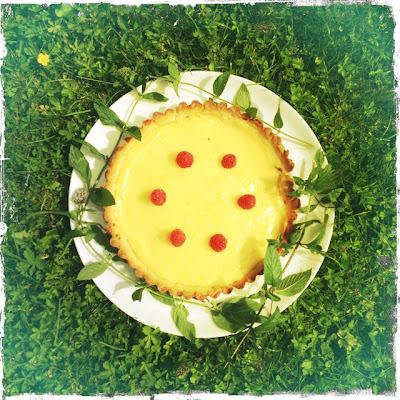We've covered the subject that eating in France is a very communal, group-type experience.
In the United States, meetings have food as an accessory: hey, grab another donut while we discuss our turnover growth!
In France, well, food has meetings as an accessory. In the workplace, there's always some kind of occasion that justifies breakfast or a goûter. Whenever someone wants to announce a pregnancy, an engagement, or just a general happy mood, chances are they'll stroll into the office with a big bag from the local boulangerie.
If there's a breakfast get-together "just because", chances are any meetings might be delayed by a few - or 5, or 10 - minutes. I mean look, we're talking breakfast here. Flaky, buttery dough. Isn't that enough to put work aside for a while?
Breakfast get-together food isn't just random cake. If you really want to nail an office breakfast, here's the key. Grab some mini-pastries to make everyone happy. Most of the time, half of your colleagues will reach for the pain au chocolat, or chocolate croissant. Wouldn't you?!?
A minority goes for the raisin roll - given the choice between chocolate and raisins, if you can't have Raisinets, I think you'd go for the same as I would. Now imagine what happens when there's only one of those chocolate croissants left. War?
Nope! Enter the chouquettes.
Chou-who? Chouquettes. You've heard of the word chou, which means cabbage but is also a tender "honey"-like nickname. The chouquette is something else altogether. This chouquette here is a staple, no wait, a foundation of French breakfast get-togethers. I've made them before, you might remember. They're the most simple pastry ever, it would seem: chou pastry dough and sugar. That's it.
Easy does it, right? Now factor in how many eggs you use to achieve optimal moisture. How the sugar should be sprinkled all over, even around the edges, for the extra crispy, extra caramelized sugary taste that makes a good chouquette so special. Honestly, aside for fun, there's no real reason to make your own chouquettes at home. You can get a dozen golf ball-sized treats for 2 euros, and have the immense privilege of eating them straight from the paper bag. Which means, digging for all the little pieces of sugar that fall off, creating a mound of sugar that's just waiting for you.
Chouquettes culturally have that special something that makes everyone enjoy them, or at least the idea of them. Cute little mounds of sugar that make everyone around smile - what's better than that? Move over, Mean Girls: chouquettes are what really gives you the cool factor during recess. (Or office breakfast, but you get the point)

.JPG)
.JPG)











